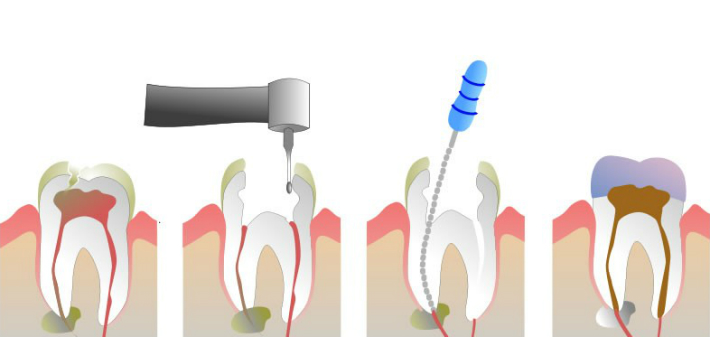When a cavity or damaged tooth develops a deep dental infection, your dentist will likely recommend a root canal and follow-up care.
Here at Arkansas Family Dental, we teach our patients that preventative dental care is the most effective method for preventing dental infections, disease, and other issues that can affect the health of your teeth. But, at times, factors such as injury or decay may require you to seek further treatment in order to save a damaged tooth. Fortunately, with today’s modern dentistry, the best root canal procedure and care can now be performed to restore your teeth and prevent extractions.
When Is A Root Canal Necessary?
When the soft tissue inside of a tooth, known as its pulp, becomes infected and inflamed, a root canal or extraction procedure must be performed in order to prevent the infection from spreading to the surrounding teeth and jawbone. Unlike an extraction, which requires the removal of the tooth, a root canal procedure can be performed instead to eliminate the infection and save the tooth.
An infection of the tooth’s pulp usually occurs when a cavity is left untreated or when a tooth is injured or cracked. Signs of an infected tooth include swelling around the affected area and pain that can range from mild to severe. The diseased pulp can be removed and the infection can be eliminated so that your damaged tooth can be successfully restored.
How Is A Root Canal Procedure Performed?
To prevent any possible pain, your dentist will thoroughly numb your tooth and the surrounding tissue before the start of your root canal procedure. Once the infected tooth is numbed, the tooth’s top layer (known as its crown) is drilled away so that the tooth’s pulp chamber can be accessed. Using a series of fine dental files, the tooth’s unhealthy pulp and any surrounding infection is then carefully removed. Next, the hollowed out pulp chamber is irrigated to remove any remaining debris.
Once the infected pulp has been removed, a permanent material known as gutta percha will be used to fill in the hollowed out pulp chamber in order to prevent any further infection or contamination. A temporary filling that matches your teeth will then be used to seal off the tooth’s opening and restore the biting surface.
After Your Root Canal Procedure
After a root canal procedure, you may experience some tenderness around the treated tooth as your body begins to heal. It is recommended that you wait for any numbness to wear off before eating to prevent injury to your cheek or tongue. Since a large filling is placed after a root canal procedure, you’ll want to pay special attention to the tooth to be sure that the filling remains intact until a crown is placed.
Your dentist will usually recommend placing a permanent crown after your root canal procedure to protect and reinforce the weakened tooth. A restorative treatment known as a post and core may also be performed prior to the crown’s installation, whereby a small rod is inserted into the root canal to support a core filling in order to provide the tooth with additional structure and support.
Visiting your dentist regularly, and maintaining a consistent oral hygiene regimen will help to ensure that your teeth remain healthy and strong. If you experience swelling or gum pain, contact Arkansas Family Dental in order to prevent a possible root canal infection from spreading. By scheduling an appointment with Arkansas Family Dental today, you can make sure you receive the best root canal procedure and care.


Leave a Reply